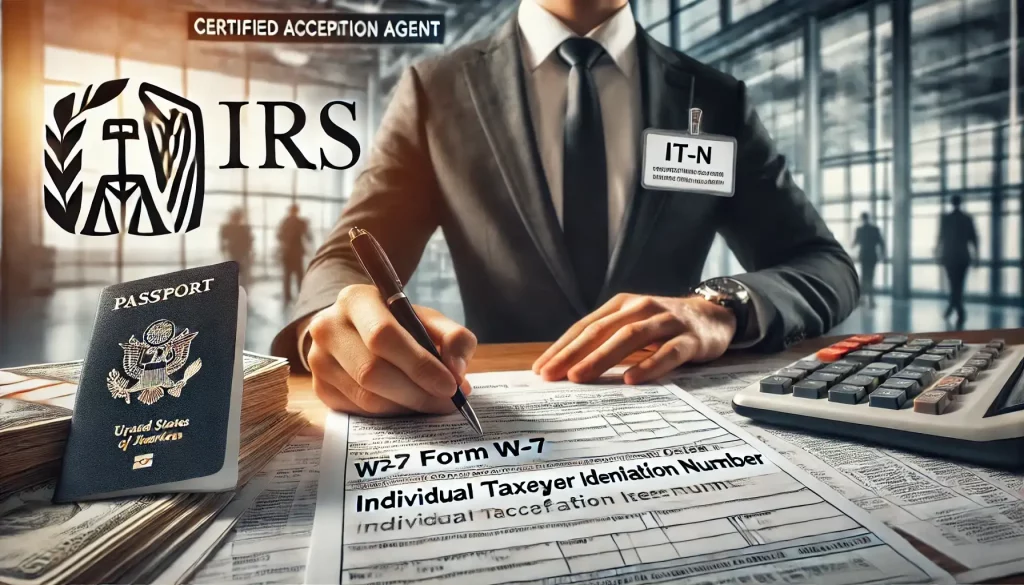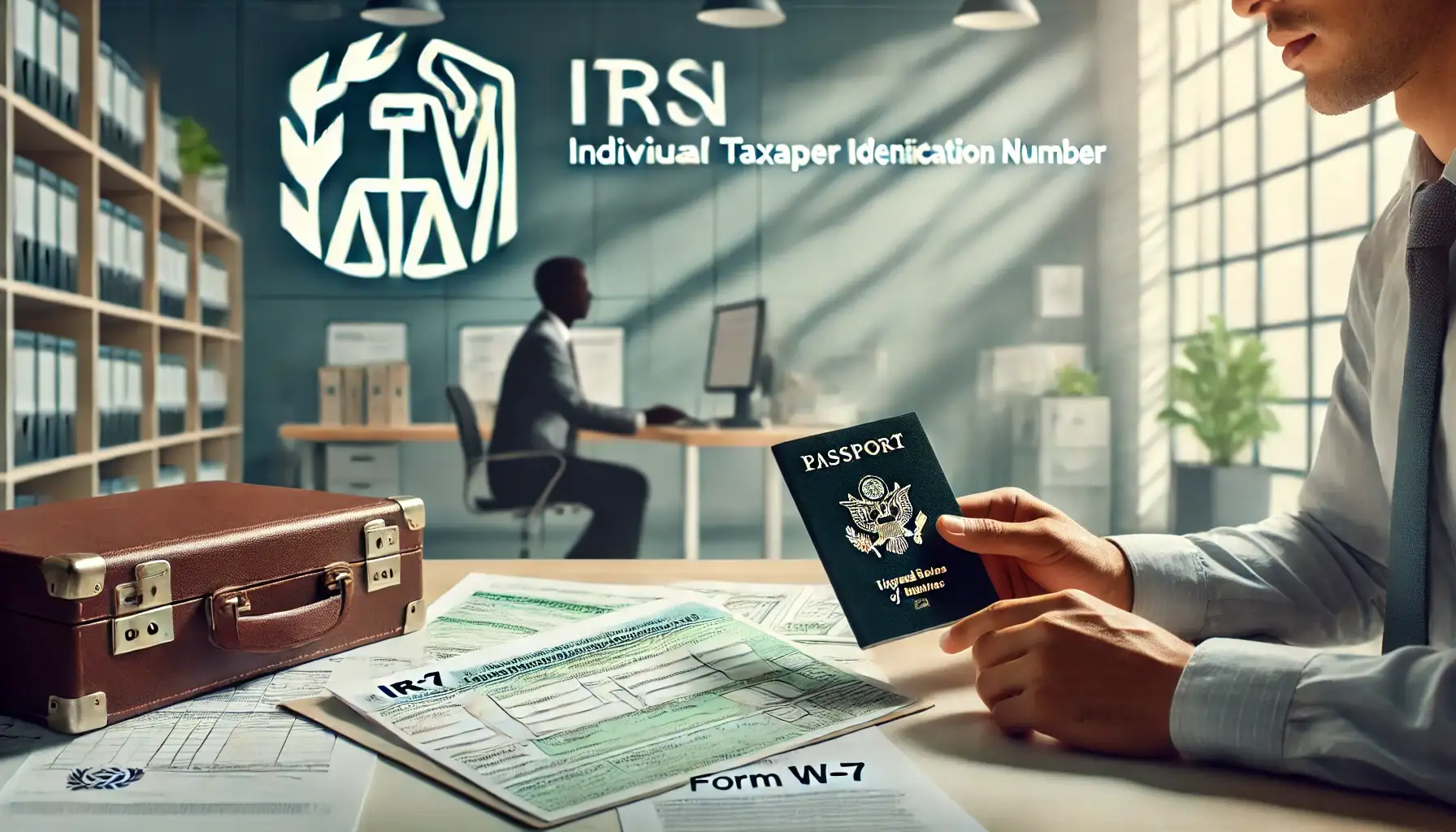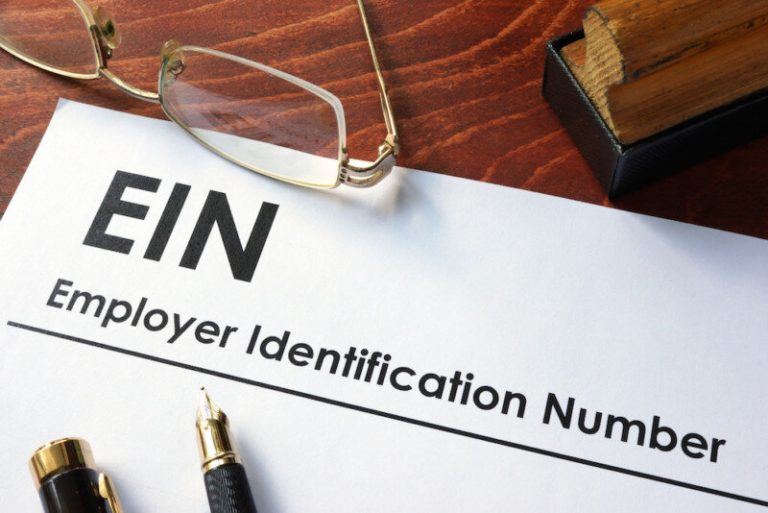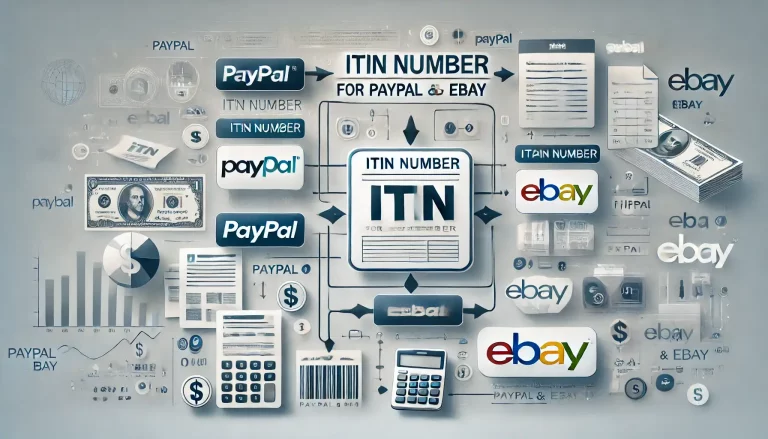3 steps to get ITIN for Non-Residents: A Complete Guide
When non-residents need to fulfill U.S. tax obligations but aren’t eligible for a Social Security Number, obtaining or get ITIN (Individual Taxpayer Identification Number) is essential. This article provides a comprehensive guide on how to apply for an ITIN, including step-by-step instructions for completing Form W-7, gathering the required documents, and submitting the application. Whether through mail, in-person at an IRS center, or via a Certified Acceptance Agent (CAA), this guide helps ensure a smooth process for acquiring your ITIN and staying tax compliant.
An ITIN (Individual Taxpayer Identification Number) is essential for non-residents who need to file U.S. taxes. Here’s a step-by-step guide on how to secure one.
Table of Contents
What is an ITIN?
An ITIN is issued by the IRS to individuals who are not eligible for a Social Security Number but need to fulfill U.S. tax obligations. Non-residents often require this number to file tax returns, claim tax treaty benefits, or meet other financial reporting requirements.
Eligibility for an ITIN
Non-residents, including foreign nationals, their dependents, and spouses, may need an ITIN if they are required to file a U.S. tax return. Typically, individuals who are not authorized to work in the U.S. but have tax reporting responsibilities fall into this category.

Step-by-Step Process for get ITIN
1. Complete Form W-7
To start, complete IRS Form W-7, “Application for IRS Individual Taxpayer Identification Number.” This form requires basic personal information such as name, date of birth, and reason for requesting an ITIN.
2. Provide Supporting Documentation
Applicants must provide original or certified copies of identity documents, such as a passport or national ID card, to verify foreign status. If you cannot provide a passport, you may need two forms of identification from an approved list, such as a national ID card, birth certificate, or U.S. visa.
3. Submit the Application
Submit Form W-7 and supporting documents in one of the following ways:
- By Mail: Send the completed form, documents, and a tax return to the IRS address listed on the form.
- In Person: Visit an IRS-authorized Certified Acceptance Agent (CAA) or IRS Taxpayer Assistance Center (TAC). CAAs can certify certain documents, which eliminates the need to send originals.
- Electronically (Where Applicable): Some CAAs offer electronic submission services, expediting the process.
Timing and Fees
Applying directly to the IRS is free, but if using a CAA, service fees may apply. ITIN processing typically takes 7-11 weeks, depending on how the application is submitted and the time of year.
Renewing or Updating an ITIN
ITINs expire after a set period, so ensure timely renewal to avoid tax complications. Expired ITINs can delay refunds or lead to penalties.
Conclusion
Obtaining an ITIN as a non-resident is essential for meeting U.S. tax obligations if you’re ineligible for a Social Security Number. By completing Form W-7 and submitting the necessary identification documents, either through mail or an authorized agent, you can apply efficiently. Ensuring you meet deadlines and renew your ITIN when required will help avoid delays or penalties in future tax filings. For professional guidance or assistance, consider working with a Certified Acceptance Agent or a tax expert to streamline the process.
FAQs
Who needs an ITIN?
Non-residents, foreign nationals, and those ineligible for a Social Security Number but required to file U.S. tax returns need an ITIN.
How long does it take to get ITIN?
Processing takes approximately 7-11 weeks, depending on submission method and time of year.
What documents are needed?
You’ll need to submit a passport or two forms of ID, such as a national ID card or U.S. visa, with Form W-7.
Can I renew my ITIN?
Yes, ITINs expire and must be renewed when needed for tax filing.







